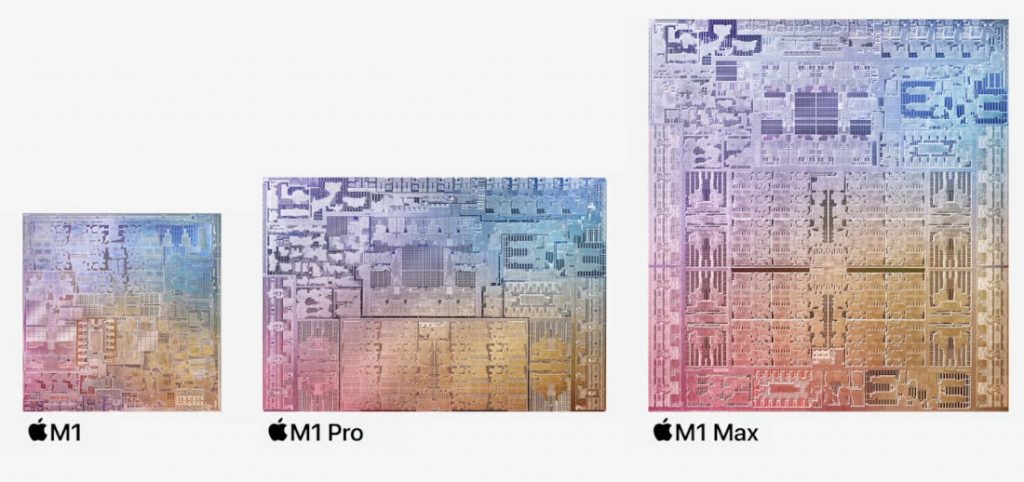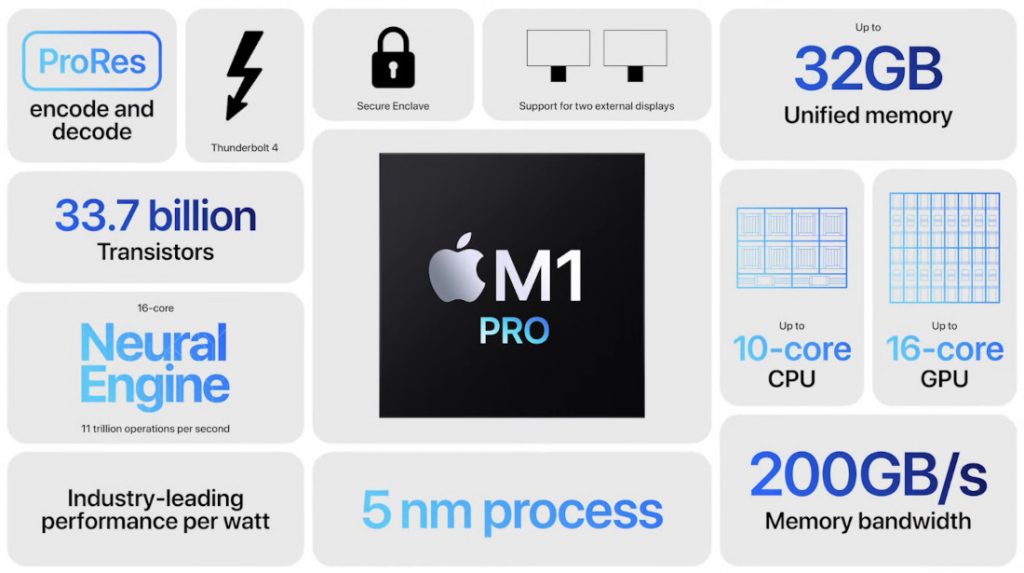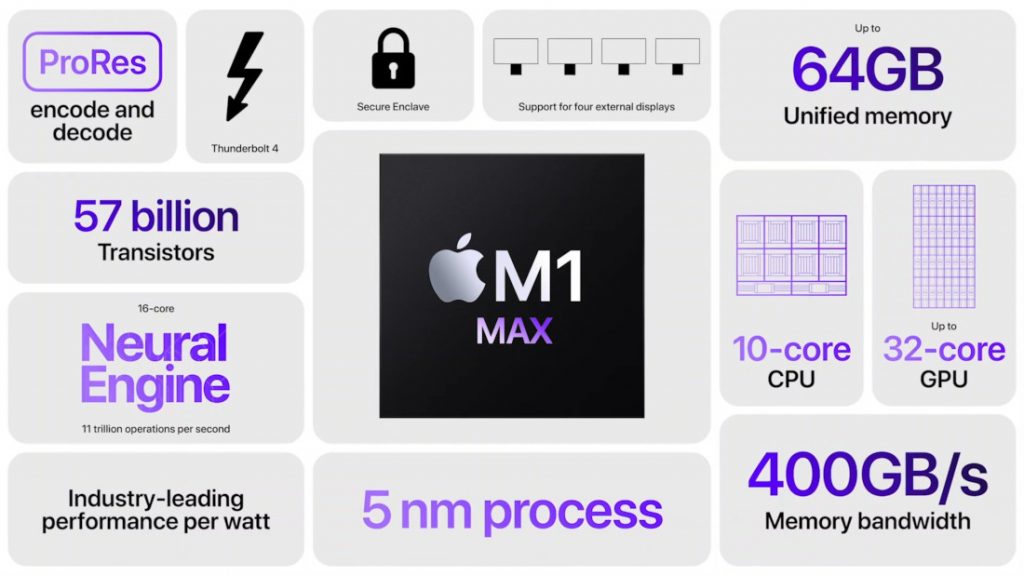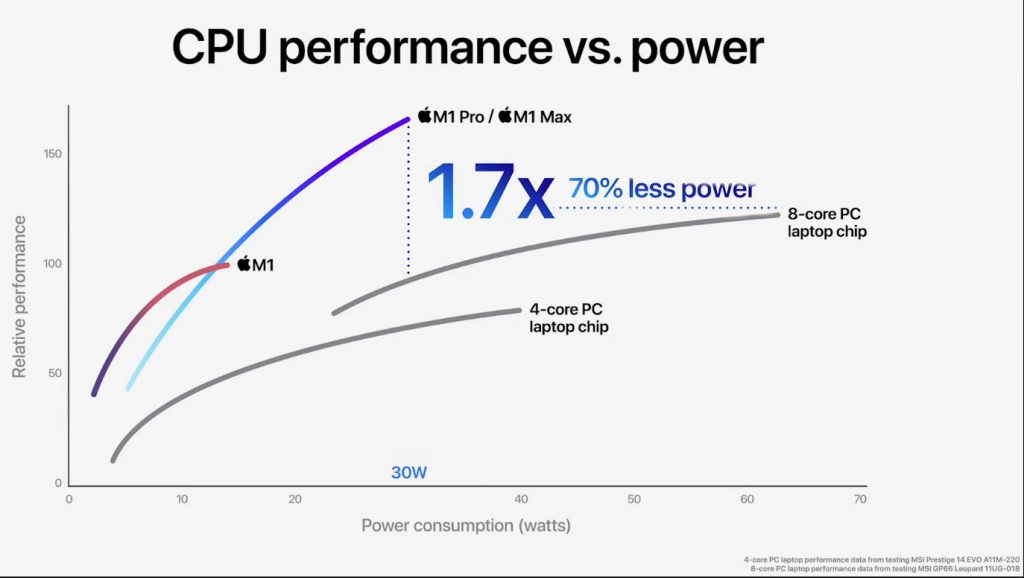 Apple at its ‘Unleashed’ event announced M1 Pro and M1 Max, the next-generation chips and successor to last year’s M1 promises up to 70% faster CPU performance. The GPU in M1 Pro is up to 2x faster than M1, while M1 Max is up to 4x faster than M1, says Apple. These are still based on the 5nm process technology, but come with a system-on-a-chip (SoC) architecture featuring an unified memory, better performance per watt, and incredible power efficiency, along with increased memory bandwidth and capacity.
Apple at its ‘Unleashed’ event announced M1 Pro and M1 Max, the next-generation chips and successor to last year’s M1 promises up to 70% faster CPU performance. The GPU in M1 Pro is up to 2x faster than M1, while M1 Max is up to 4x faster than M1, says Apple. These are still based on the 5nm process technology, but come with a system-on-a-chip (SoC) architecture featuring an unified memory, better performance per watt, and incredible power efficiency, along with increased memory bandwidth and capacity.

The M1 Pro offers up to 200GB/s of memory bandwidth, with support for up to 32GB of unified memory. The M1 Max offers up to 400GB/s of memory bandwidth — 2x that of M1 Pro and nearly 6x that of M1 — and support for up to 64GB of unified memory. These also feature enhanced media engines with dedicated ProRes accelerators specifically for pro video processing.

M1 Pro highlights and specifications
- 33.7 billion transistors, more than 2x the amount in M1.
- New 10-core CPU, including eight high-performance cores and two high-efficiency cores, up to 70% faster than M1
- Up-to 16-core GPU that is up to 2x faster than M1
- Compared to a powerful discrete GPU for PC notebooks, M1 Pro delivers more performance while using up to 70% less power
- M1 Pro can be configured with up to 32GB of fast unified memory, with up to 200GB/s of memory bandwidth
- Dedicated acceleration for the ProRes professional video codec, allowing playback of multiple streams of high-quality 4K and 8K ProRes video while using very little power.

M1 Max highlights and specifications
- Features the same powerful 10-core CPU as M1 Pro
- 32-core GPU for up to 4x faster graphics performance than M1.
- 57 billion transistors — 70% more than M1 Pro and 3.5x more than M1
- GPU delivers performance comparable to a high-end GPU in a compact pro PC laptop while consuming up to 40% less power, and performance similar to that of the highest-end GPU in the largest PC laptops while using up to 100 watts less power
- Up to 13x faster complex timeline rendering in Final Cut Pro compared to the previous-generation 13-inch MacBook Pro.
- Doubles the memory interface compared with M1 Pro for up to 400GB/s, or nearly 6x the memory bandwidth of M1.
- M1 Max can be configured with up to 64GB of fast unified memory.
- 2x faster video encoding than M1 Pro, featuring two ProRes accelerators.
- With M1 Max, the new MacBook Pro can transcode ProRes video in Compressor up to a remarkable 10x faster compared with the previous-generation 16-inch MacBook Pro.

Both M1 Pro and M1 Max are loaded with advanced custom technologies :
- A 16-core Neural Engine for on-device machine learning acceleration and improved camera performance.
- A new display engine drives multiple external displays.
Additional integrated Thunderbolt 4 controllers provide even more I/O bandwidth. - Apple’s custom image signal processor, along with the Neural Engine, uses computational video to enhance image quality for sharper video and more natural-looking skin tones on the built-in camera.
- Best-in-class security, including Apple’s latest Secure Enclave, hardware-verified secure boot, and runtime anti-exploitation technologies.
The M1 Pro and M1 Max power the new MacBook Pro models released today and is expected in the upcoming Mac Mini.
